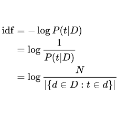This study analyzes Walt Whitman's stylistic changes in his phenomenal work Leaves of Grass from a computational perspective and relates findings to standard literary criticism on Whitman. The corpus consists of all 7 editions of Leaves of Grass, ranging from the earliest 1855 edition to the 1891-92 "deathbed" edition. Starting from counting word frequencies, the simplest stylometry technique, we find consistent shifts in word choice. Macro-etymological analysis reveals Whitman's increasing preference for words of specific origins, which is correlated to the increasing lexical complexity in Leaves of Grass. Principal component analysis, an unsupervised learning algorithm, reduces the dimensionality of tf-idf vectors to 2 dimensions, providing a straightforward view of stylistic changes. Finally, sentiment analysis shows the evolution of Whitman's emotional state throughout his writing career.
翻译:本研究从计算角度分析了沃尔特·惠特曼在惊人的草叶工作方面的文体变化,并将研究结果与对惠特曼的标准文学批评联系起来。本集由最早的1855年版至1891-92年的“死亡”版的所有7版《草叶》组成。从计算单词频率开始,我们发现在单词选择方面有一致的转变。宏观学分析显示惠特曼越来越偏爱特定起源的单词,这与格拉斯叶中日益复杂的单词法相关。主要组成部分分析,一种不受监督的学习算法,将tf-idf矢量的维度降低到2维度,提供了对文体变化的直截面。最后,情绪分析显示惠特曼在其写作生涯中情感状态的演变。




